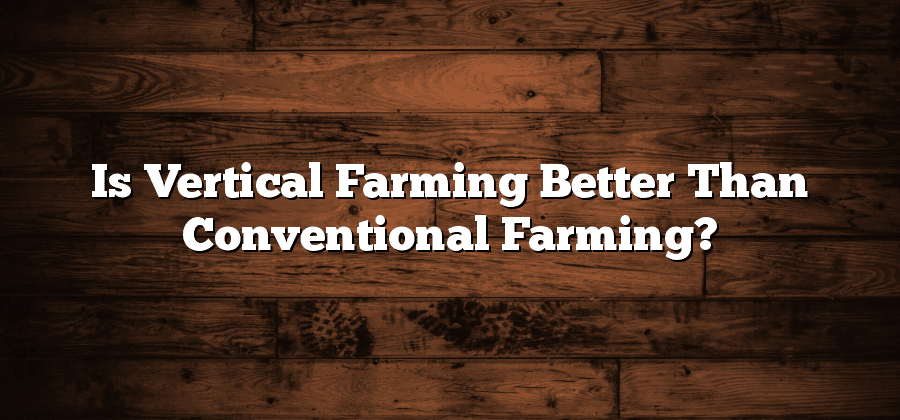Efficient Use of Space
When it comes to efficient use of space, optimizing every inch becomes crucial, especially in urban areas where land is limited. The goal is to maximize productivity without compromising on quality. Vertical gardening is one solution that has gained popularity. By utilizing vertical structures such as walls or trellises, plants are grown upwards, saving horizontal space. This technique not only boosts crop yields but also creates a visually appealing landscape.
Another approach to efficient space utilization is through the practice of intercropping. This method involves growing two or more types of crops simultaneously in the same field. By carefully selecting compatible plants that complement each other’s growth habits, farmers can maximize the productivity of their land. This technique reduces the amount of empty space between plants, allowing for a greater overall yield. Moreover, intercropping can provide additional benefits such as pest control and soil fertility improvement, making it an environmentally friendly choice.
Reduced Water Consumption
Water is an essential resource for agriculture, but its scarcity and the need for sustainable consumption has become a global concern. In order to address this issue, farmers and agricultural professionals have been striving to reduce water consumption in various ways. One method is through the implementation of efficient irrigation techniques, such as drip irrigation or precision sprinklers. These systems provide water directly to the roots of plants, minimizing water loss due to evaporation or runoff. Additionally, farmers are adopting practices such as rainwater harvesting and water recycling, optimizing the use of available water resources and minimizing waste.
Furthermore, advancements in technology and research have led to the development of innovative farming methods that require less water. One such approach is hydroponics, where plants are grown in a nutrient-rich water solution instead of soil. This technique significantly reduces water usage as it allows for precise control over the water supply, ensuring that plants receive just the right amount they need for optimal growth. Moreover, the integration of smart sensors and automation in irrigation systems enables farmers to monitor soil moisture levels and adjust watering schedules accordingly, preventing overwatering and conserving water resources. As we continue to prioritize reduced water consumption in agriculture, these strategies and technologies will play a crucial role in sustaining the productivity of our food systems while conserving this vital resource.
Year-Round Crop Production
Year-round crop production is a goal that many agricultural industries strive to achieve. By utilizing advanced techniques and technologies, farmers are able to extend their growing seasons and ensure a continuous supply of crops throughout the year. This not only provides a steady income for farmers but also benefits consumers by ensuring a consistent availability of fresh produce.
One of the key strategies for achieving year-round crop production is the implementation of controlled environment agriculture (CEA) systems. CEA involves the use of enclosed structures, such as greenhouses or vertical farms, which allow farmers to have greater control over various environmental factors. These factors include temperature, humidity, light intensity, and air composition. By maintaining optimal conditions for plant growth, farmers can cultivate crops even during unfavorable weather conditions, such as extreme temperatures or seasonal fluctuations. Additionally, CEA systems enable farmers to shield their crops from pests and diseases, further ensuring a continuous supply of high-quality produce.
Minimized Dependency on Weather Conditions
With advancements in agricultural technology, farmers now have the means to minimize their dependency on weather conditions for crop production. Traditionally, farmers were at the mercy of nature’s whims, as they relied on the right amount of sunlight, rainfall, and temperature to ensure successful harvests. However, with the advent of controlled environment agriculture (CEA), farmers can now replicate ideal growing conditions within enclosed spaces.
One key aspect of minimizing dependency on weather conditions is the use of greenhouse structures. These structures create a controlled environment that shields crops from extreme weather events such as droughts, floods, or severe storms. By regulating temperature, humidity, and light levels, farmers can ensure optimal growing conditions regardless of the unpredictable weather outside. Moreover, with the ability to monitor and adjust these factors, farmers have a greater sense of control over the growth and development of their crops.
Control Over Environmental Factors
By having control over environmental factors, farmers are able to ensure optimal conditions for their crops. This includes having control over temperature, humidity, and light levels. With modern technology and advanced systems such as climate-controlled greenhouses, farmers are able to manipulate these factors to create the ideal growing conditions for their plants. This allows for year-round crop production, eliminating the need to rely solely on natural weather conditions.
In addition to temperature, humidity, and light, control over environmental factors also extends to irrigation and nutrient levels. With precision irrigation systems and soil sensors, farmers can monitor and adjust the water and nutrient supply to their crops. This not only reduces water consumption, but it also ensures that the plants receive the exact amount of water and nutrients they need for optimal growth. By having this level of control, farmers can minimize waste, optimize resource usage, and ultimately increase their crop yield.






